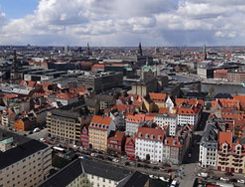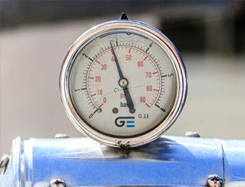
More than 50% of the population of Latvia, Denmark, Estonia, Lithuania, Poland, Sweden & Finland is served by DH networks.
District heating (DH) systems are one of the most energy efficient heating systems to deliver heat in urban environments, with proven reliability within many decades already. DHs are also identified as key systems to achieve the de-carbonization of heating energy in European Cities. Renewable and waste heat sources are foreseen at the same time as de-carbonized heat sources and the way to guarantee competitive energy costs with limited influence of fossil fuel supply price volatility. Despite this fact, district heating are serving to a market share of only 12% of the European citizens today, when studies have shown that these systems can be expanded to a market share of 50% in 2050. Such ambitious scenario requires a conversion of actual DH concept. In the forthcoming energy market, DHs need to evolve regarding:
- The reduction of their operation temperature to integrate low-grade industrial heat sources.
- The introduction of larger shares of renewable energy sources.
- The introduction of distributed heat sources (reject heat from cooling equipment…).
- To guarantee economic viability with the trend of DH heat load reduction due to the evolution of Near Zero Energy Buildings.
District heating systems are identified as key systems to achieve the de-carbonization of heating energy in European Cities.
Ultra-Low Temperature concept

RELaTED proposes a district heating concept where substantially lower temperatures are used.
RELaTED has provided an innovative concept of decentralized Ultra-Low Temperature (ULT) network solution that can pave the way for expanding and modernizing existing district heating networks as well as introducing and establishing district heating in emerging EU markets. This project, funded under the European Union’s Horizon 2020 research and innovation programme, has developed a robust ultra-low temperature concept, which allow for the incorporation of low-grade heat sources with minimal constraints. Also, ULT DH reduces operational costs due to fewer heat losses, better energy performance of heat generation plants and extensive use of de-carbonized energy sources at low marginal costs. The RELaTED ULT DH concept has been demonstrated in four complementary operation environments (new and existing DH, locations, climatic conditions, dimension…) in Denmark, Estonia, Serbia and Spain.
RELaTED has provided an innovative concept of decentralized Ultra-Low Temperature (ULT) network solution with substantian efficiency and environmental benefits
RELaTED approach has followed the strategy of the electrical smart grids, in which energy generation is decentralized and consumers evolve to prosumers (they consume and produce energy).
Achieved Project Results
A proven concept:
- The RELaTED ULT concept has been demonstrated in 4 clearly different environments covering extremely different climatic conditions, construction traditions, urban density, pre-existing district scheme, ownership and energy services contract schemes.
- Successful integration of local RES and waste heat production, and 3FS, DHRHP, and BILTST systems.
- Feasibility studies have been performed in 2 European regions.
A commercially viable system:
- The RELaTED ULT concept achieves a reduced cost of heat due to systematic use of low cost waste or renewable energy sources at low temperatures, which reflect in reduced fossil fuel needs and lower exposure to price fluctuations in fuel imports.
- Standardized schemes have been defined to facilitate the integration of RES or waste heat producers within grids in operation.
- Flexible operational schemes which limit initial costs in production and distribution infrastructure and link capital investment to the growth profile of energy loads
- Maximisation of energy distribution by means of ultra-low temperature heat extraction of return lines in existing district networks.
Achieved Project Impacts:
- Primary energy savings and GHG emission savings due to ULT DH: The use of ULT and RES in DH systems has resulted in final energy savings ion the range of 570 MWh/year.
- Competitiveness of the heat delivered by the proposed solutions: The impact of all the interventions in RELaTED results in economic saving in the range of 7.5 Million € (2021).
- Increased share of residual and renewable sources of thermal energy in the supply of heating demand. 12.5 GWh/year of residual heat recovery + 64 GWht/year of cogeneration is already in operation. Additionally, a large scale intervention in the range of 600MWt is to get into operation shortly after the end of RELaTED.
- Replication by RELaTED partner DH networks, DH operators, research and institutional partners.
- Replication by third parties in the DH community.
